Moroccan traditional crafts are famous worldwide. These crafts are a big part of Morocco’s rich culture. Each craft tells a story of the country’s history and traditions. From colorful carpets to shiny jewelry, these handmade items are unique and beautiful.
Many skilled artisans in Morocco create these crafts. They use techniques passed down through generations. These crafts are not just items; they are pieces of art. They show the creativity and talent of the Moroccan people.
In this article, we will explore different Moroccan crafts. We will look at their features, advantages, and benefits. You will learn why they are special and how they can add beauty to your home or wardrobe.
Moroccan Carpets
Moroccan carpets are famous for their intricate designs and vibrant colors. These carpets are handmade by skilled weavers. Each carpet tells a story with its unique patterns.
One feature of Moroccan carpets is their beautiful designs. Artisans use bright colors and complex patterns. This makes each carpet one-of-a-kind. The weavers use natural dyes, giving the carpets rich, deep colors.
The advantage of these carpets is their durability. They are made from high-quality wool, which makes them last for many years. The tight weave ensures that the carpets can withstand heavy use without wearing out.
The benefit of owning a Moroccan carpet is that it adds elegance to any room. These carpets can be a stunning centerpiece in your home. They bring a touch of Moroccan culture and artistry to your living space. Plus, they are comfortable to walk on and can keep your feet warm during cold weather.
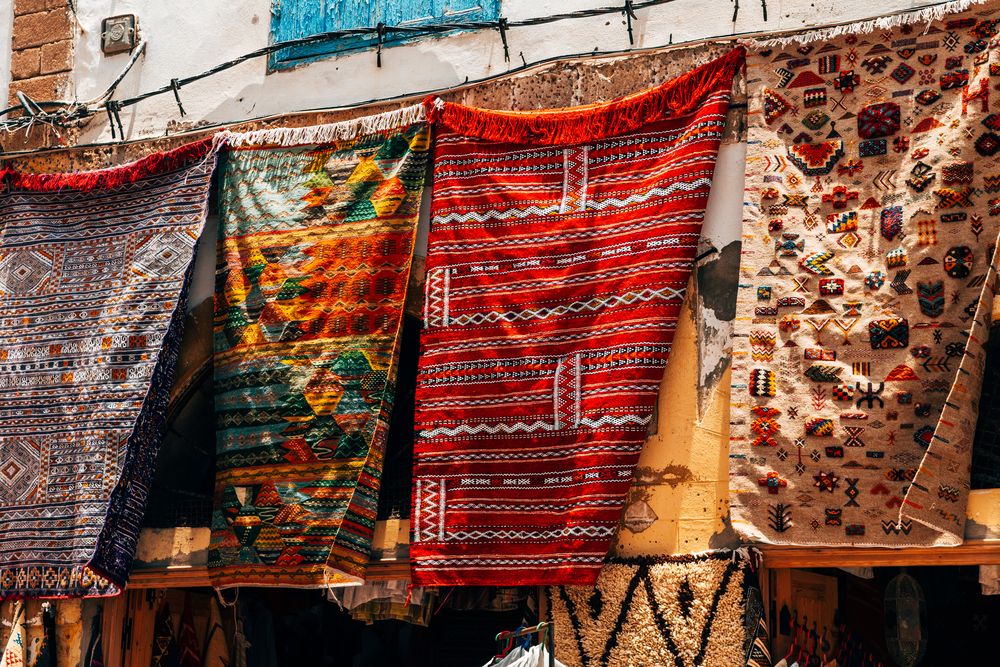
Moroccan Traditional Clothing
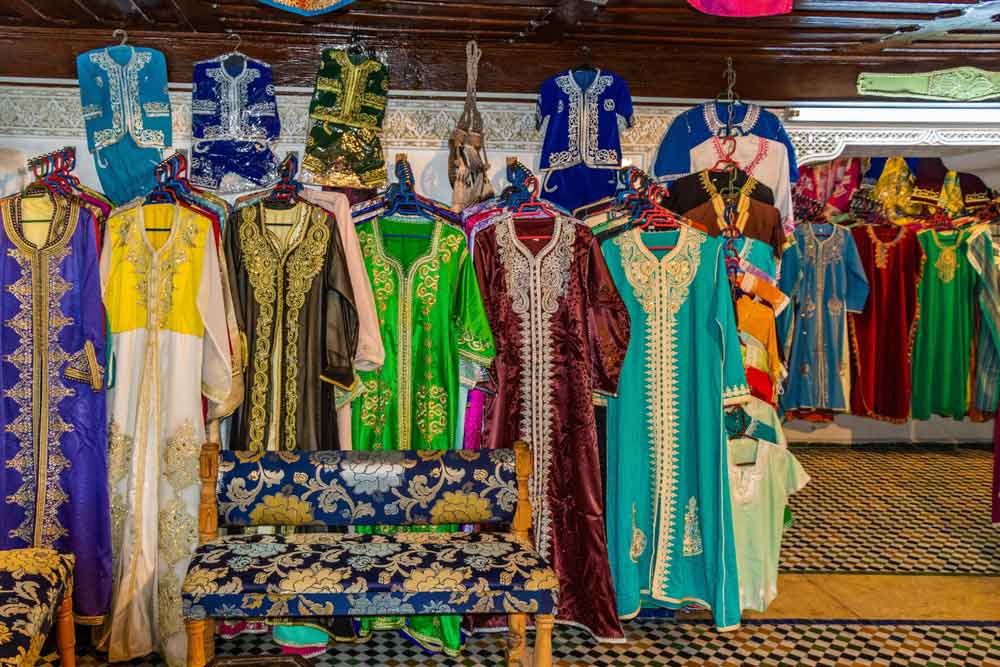
Moroccan traditional clothing is colorful and ornate. People wear these clothes for special events and daily life. The clothes reflect Morocco’s diverse culture.
Traditional clothing in Morocco often uses high-quality fabrics like silk and wool. The garments are usually decorated with intricate embroidery. This makes each piece unique and beautiful.
One advantage of traditional Moroccan clothing is its comfort. The fabrics are soft and breathable. This makes them ideal for the hot Moroccan climate. The clothing is also very durable. It can last a long time with proper care.
The benefit of wearing traditional Moroccan clothing is that it showcases cultural pride. These clothes are perfect for special occasions like weddings and festivals. They allow you to connect with Moroccan heritage and display its rich traditions.
Moroccan Jewelry
Moroccan jewelry is known for its intricate designs and use of precious materials. Craftsmen create stunning pieces using gold, silver, and gemstones.
One feature of Moroccan jewelry is its detailed craftsmanship. Artisans use traditional techniques to make each piece. This includes engraving and filigree work, which adds to the beauty of the jewelry.
The advantage of Moroccan jewelry is its uniqueness. Each piece is handmade, making it one-of-a-kind. The jewelry often features symbols and motifs that have cultural significance.
The benefit of wearing Moroccan jewelry is that it enhances personal style. These pieces can make any outfit stand out. They are perfect for special occasions or as a unique gift. Moroccan jewelry also serves as a beautiful reminder of the country’s rich culture.
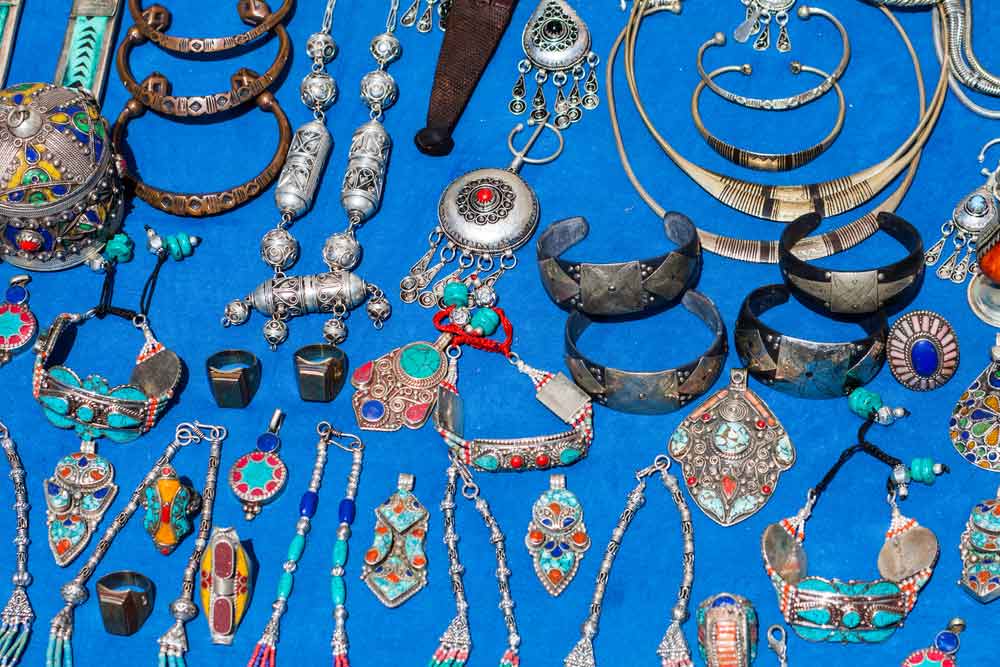
Moroccan Ceramics and Pottery
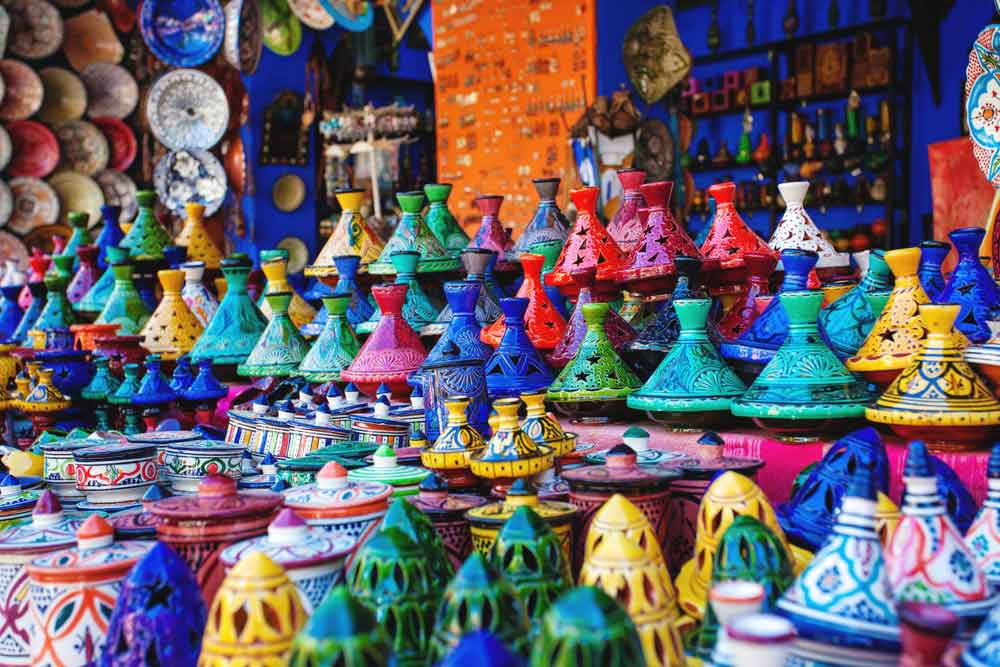
Moroccan ceramics and pottery are admired for their vibrant colors and detailed designs. Artisans hand-paint each piece, creating stunning works of art.
A key feature of Moroccan pottery is its hand-painted designs. Craftsmen use bright colors and intricate patterns. This makes each piece unique and eye-catching.
One advantage of Moroccan ceramics is their versatility. They can be used for both decorative and practical purposes. From plates and bowls to vases and tiles, these items are both beautiful and functional.
The benefit of owning Moroccan pottery is that it adds a splash of color to any space. These pieces can brighten up your kitchen or living room. They also make great gifts, as they are both beautiful and practical.
The Wrought Iron
Moroccan wrought iron is famous for its strength and beauty. Craftsmen shape the iron into intricate designs, creating stunning furniture and decor items.
One feature of Moroccan wrought iron is its detailed craftsmanship. Artisans skillfully shape the metal into beautiful patterns. This makes each piece a work of art.
The advantage of wrought iron is its durability. The material is strong and long-lasting. It can withstand outdoor elements, making it ideal for garden furniture and decor.
The benefit of having Moroccan wrought iron items is that they add a rustic and artistic touch to any space. Whether it’s a decorative gate or a piece of furniture, these items bring a unique charm to your home or garden.
Marquetry and the Thuja Tree
Marquetry is the art of inlaying wood to create beautiful patterns. Moroccan craftsmen often use wood from the Thuja tree for this work. The result is stunning furniture and decorative items.
One feature of Moroccan marquetry is its intricate designs. Artisans carefully inlay different types of wood to create detailed patterns. This makes each piece unique and beautiful.
The advantage of using Thuja tree wood is its durability. This wood is known for its strength and resistance to insects. It ensures that marquetry items last for many years.
The benefit of owning marquetry pieces is that they add a luxurious touch to your home. These items showcase the skill and creativity of Moroccan artisans. They are perfect for adding elegance to any room.
Zellige Tiles and Plaster Sculptures
Zellige tiles are hand-cut mosaic tiles used in Moroccan decor. Plaster sculptures are another traditional craft, featuring intricate designs carved into plaster.
A feature of Zellige tiles is their vibrant patterns. Craftsmen cut and arrange small pieces of tile to form beautiful mosaics. These tiles are often used in walls, floors, and fountains.
The advantage of Zellige tiles is their versatility. They can be customized to fit any design. The tiles are also very durable and can withstand moisture, making them perfect for bathrooms and kitchens.
The benefit of using Zellige tiles and plaster sculptures is that they add a touch of Moroccan artistry to any space. These items can transform a simple room into a stunning display of culture and craftsmanship.
Moroccan Metal Work
Moroccan metalwork includes items made from brass, silver, and other metals. Artisans create intricate designs, making each piece unique.
A feature of Moroccan metalwork is its detailed craftsmanship. Craftsmen use techniques like engraving and filigree to decorate the metal. This results in beautiful and unique items.
The advantage of Moroccan metalwork is its durability. Items made from metal are strong and long-lasting. They can be used both indoors and outdoors without losing their beauty.
The benefit of owning Moroccan metalwork is that it adds elegance to any space. Whether it’s a decorative lamp or a piece of jewelry, these items bring a touch of Moroccan culture to your home.
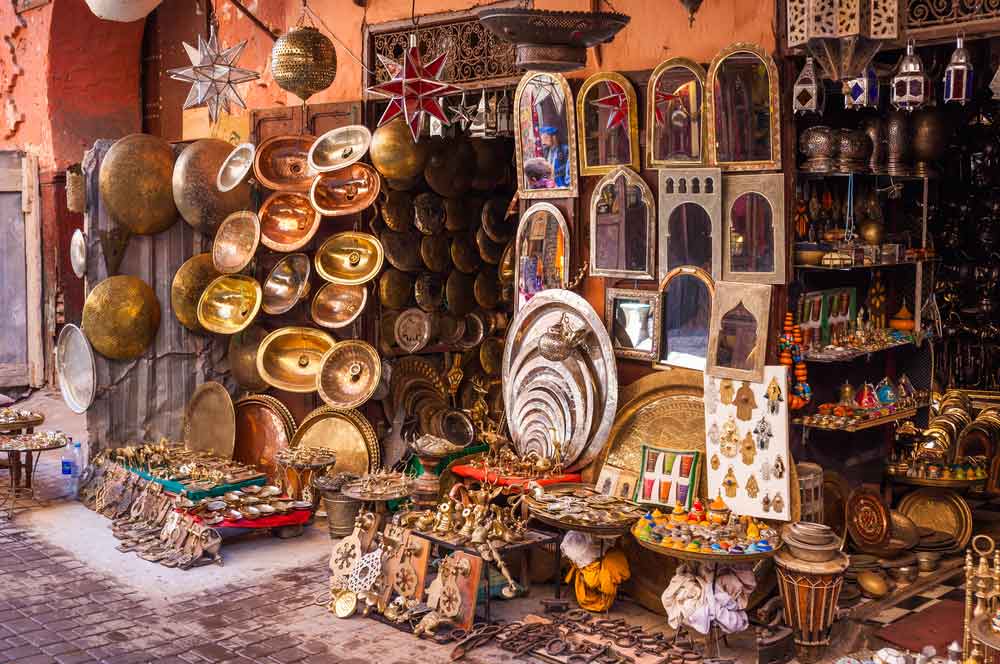
Moroccan Tannery, Leather, and Leather Goods
Moroccan leather is known for its high quality. Artisans use traditional methods to process the leather, creating beautiful and durable goods.
One feature of Moroccan leather goods is their quality. The leather is soft yet strong. Craftsmen use it to make items like bags, shoes, and belts.
The advantage of Moroccan leather is its durability. These items can last for many years with proper care. The traditional tanning process also ensures that the leather is flexible and comfortable to use.
The benefit of owning Moroccan leather goods is that they combine practicality with style. These items are not only useful but also reflect Moroccan craftsmanship. They are perfect for everyday use and make great gifts.
Conclusion
Moroccan traditional crafts are more than just items; they are a part of Morocco’s rich heritage. From carpets to leather goods, each craft tells a unique story. These crafts add beauty and cultural value to our lives. Exploring these crafts helps us appreciate the skill and creativity of Moroccan artisans. Next, we will delve deeper into the history and significance of these traditional crafts, starting with Moroccan carpets.
